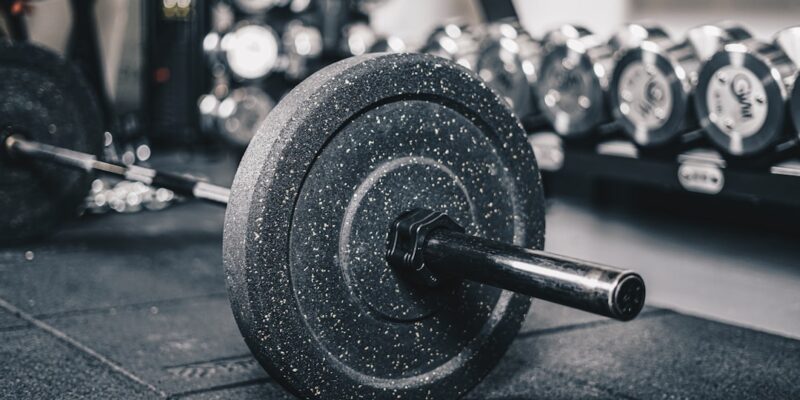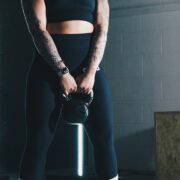
Total-Body Conditioning: Rowing Machine Workouts
Total-body conditioning refers to a type of exercise that targets all major muscle groups in the body, providing a comprehensive workout that improves strength, endurance, and overall fitness. One effective way to achieve total-body conditioning is through rowing machine workouts. Rowing machines, also known as ergometers or ergs, simulate the motion of rowing a boat and provide a challenging and effective workout for the entire body.
Rowing machine workouts offer a unique combination of cardiovascular exercise and strength training, making them an excellent choice for those looking to improve their overall fitness. Whether you are a beginner or an experienced athlete, rowing machine workouts can be tailored to your fitness level and goals.
Key Takeaways
- Rowing machine workouts provide total-body conditioning for improved strength, endurance, and cardiovascular health.
- Benefits of rowing machine workouts include increased calorie burn, improved posture, and reduced risk of injury.
- Proper rowing machine technique involves maintaining a strong core, engaging the legs and arms, and maintaining a consistent rhythm.
- Upper body rowing machine workouts can improve strength and endurance in the back, shoulders, and arms.
- Lower body rowing machine workouts can improve strength and endurance in the legs and glutes.
Benefits of Rowing Machine Workouts for Total-Body Conditioning
1. Improved cardiovascular health: Rowing is a highly effective cardiovascular exercise that gets your heart rate up and increases blood flow throughout the body. Regular rowing machine workouts can improve your cardiovascular endurance, lower your resting heart rate, and reduce the risk of heart disease.
2. Increased muscle strength and endurance: Rowing engages multiple muscle groups in the body, including the legs, arms, back, and core. As you row, you are pushing against resistance, which helps to build strength and increase muscle endurance. Over time, this can lead to improved overall muscle tone and increased athletic performance.
3. Low-impact exercise: Unlike activities such as running or jumping, rowing is a low-impact exercise that puts minimal stress on the joints. This makes it an ideal choice for individuals with joint pain or those recovering from an injury. Rowing allows you to get a challenging workout without putting excessive strain on your joints.
4. Full-body workout: One of the biggest advantages of rowing machine workouts is that they provide a full-body workout. Unlike many other forms of exercise that primarily target specific muscle groups, rowing engages multiple muscle groups simultaneously. This means that you can achieve a comprehensive workout in a shorter amount of time.
Rowing Machine Techniques for Total-Body Conditioning
1. Proper form and technique: To get the most out of your rowing machine workouts and prevent injury, it is important to use proper form and technique. Start by sitting on the seat with your feet securely strapped into the footrests. Grab the handle with an overhand grip and extend your arms forward. As you begin to row, push off with your legs, engage your core, and pull the handle towards your chest. Reverse the motion to return to the starting position.
2. Understanding resistance levels: Most rowing machines allow you to adjust the resistance level to make your workout more challenging or easier. It is important to find a resistance level that is appropriate for your fitness level and goals. Beginners may want to start with a lower resistance level and gradually increase it as they become more comfortable with the exercise.
3. Importance of warm-up and cool-down: Before starting any rowing machine workout, it is important to warm up your muscles and prepare your body for exercise. This can be done through dynamic stretches or light cardio exercises such as jogging or jumping jacks. After your workout, take the time to cool down and stretch your muscles to prevent stiffness and promote recovery.
Rowing Machine Workouts for Upper Body Strength and Endurance
| Metrics | Description |
|---|---|
| Distance | The total distance rowed during the workout |
| Time | The duration of the workout in minutes |
| Strokes per minute | The average number of strokes per minute |
| Calories burned | The estimated number of calories burned during the workout |
| Heart rate | The average heart rate during the workout |
| Resistance level | The level of resistance set on the rowing machine |
Rowing machine workouts are excellent for targeting the muscles in the upper body, including the arms, shoulders, and back. By incorporating specific exercises into your routine, you can build strength and endurance in these areas.
Some exercises that target the upper body include:
– Bicep curls: Sit on the rowing machine with your feet securely strapped in. Hold onto the handle with an underhand grip and extend your arms forward. As you row, bend your elbows and bring the handle towards your chest, engaging your biceps. Reverse the motion to return to the starting position.
– Shoulder presses: Sit on the rowing machine with your feet securely strapped in. Hold onto the handle with an overhand grip and extend your arms forward. As you row, push off with your legs and engage your core. Once your legs are fully extended, press the handle overhead, engaging your shoulders. Reverse the motion to return to the starting position.
– Back rows: Sit on the rowing machine with your feet securely strapped in. Hold onto the handle with an overhand grip and extend your arms forward. As you row, push off with your legs and engage your core. Once your legs are fully extended, pull the handle towards your chest, engaging your back muscles. Reverse the motion to return to the starting position.
A sample upper body workout routine could include 3 sets of 10-12 repetitions of each exercise, with a 30-second rest between sets.
Rowing Machine Workouts for Lower Body Strength and Endurance
In addition to targeting the upper body, rowing machine workouts are also effective for building strength and endurance in the lower body. By incorporating specific exercises into your routine, you can target the muscles in the legs and glutes.
Some exercises that target the lower body include:
– Squats: Sit on the rowing machine with your feet securely strapped in. Hold onto the handle with an overhand grip and extend your arms forward. As you row, push off with your legs and engage your core. Once your legs are fully extended, bend your knees and lower into a squat position, engaging your glutes and quadriceps. Reverse the motion to return to the starting position.
– Lunges: Stand next to the rowing machine with one foot securely strapped in and one foot on the ground. Hold onto the handle with an overhand grip and extend your arms forward. As you row, push off with your strapped-in foot and engage your core. Once your leg is fully extended, step forward with your other foot and lower into a lunge position, engaging your glutes and quadriceps. Reverse the motion to return to the starting position.
– Calf raises: Sit on the rowing machine with your feet securely strapped in. Hold onto the handle with an overhand grip and extend your arms forward. As you row, push off with your legs and engage your core. Once your legs are fully extended, rise up onto your toes, engaging your calf muscles. Reverse the motion to return to the starting position.
A sample lower body workout routine could include 3 sets of 10-12 repetitions of each exercise, with a 30-second rest between sets.
Rowing Machine Workouts for Core Strength and Stability
Rowing machine workouts are also effective for targeting the muscles in the core, including the abs and lower back. By incorporating specific exercises into your routine, you can build strength and stability in these areas.
Some exercises that target the core include:
– Russian twists: Sit on the rowing machine with your feet securely strapped in. Hold onto the handle with an overhand grip and extend your arms forward. As you row, push off with your legs and engage your core. Once your legs are fully extended, twist your torso to one side, engaging your obliques. Reverse the motion to return to the starting position, then twist to the other side.
– Plank rows: Start in a plank position with your hands on the rowing machine seat and your feet on the ground. Engage your core and row one arm at a time, pulling the handle towards your chest. Alternate sides for a complete workout.
– Leg raises: Sit on the rowing machine with your feet securely strapped in. Hold onto the handle with an overhand grip and extend your arms forward. As you row, push off with your legs and engage your core. Once your legs are fully extended, lift your legs off the ground, engaging your lower abs. Reverse the motion to return to the starting position.
A sample core workout routine could include 3 sets of 10-12 repetitions of each exercise, with a 30-second rest between sets.
Rowing Machine Workouts for Cardiovascular Health and Endurance
Rowing machine workouts are excellent for improving cardiovascular health and endurance. By incorporating high-intensity interval training (HIIT) workouts into your routine, you can maximize the cardiovascular benefits of rowing.
HIIT workouts involve alternating between periods of high-intensity exercise and periods of rest or low-intensity exercise. This type of training has been shown to be highly effective for improving cardiovascular fitness and burning calories.
A sample cardiovascular workout routine could include:
– 5 minutes of warm-up: Start with a slow and steady rowing pace to warm up your muscles and prepare your body for exercise.
– 30 seconds of high-intensity rowing: Row as fast and as hard as you can for 30 seconds, pushing yourself to your maximum effort.
– 30 seconds of rest or low-intensity rowing: Take a 30-second break or row at a slow and steady pace to recover.
– Repeat the high-intensity and rest intervals for a total of 10-15 minutes.
– 5 minutes of cool-down: Finish with a slow and steady rowing pace to cool down your muscles and promote recovery.
Rowing Machine Workouts for Weight Loss and Body Toning
Rowing machine workouts can be an effective tool for weight loss and body toning when combined with a healthy diet. Rowing is a calorie-burning exercise that can help you shed excess pounds and improve muscle definition.
To maximize weight loss and body toning, it is important to incorporate both cardiovascular workouts and strength training exercises into your routine. This will help you burn calories and build lean muscle mass.
A sample weight loss and body toning workout routine could include:
– 10 minutes of warm-up: Start with a slow and steady rowing pace to warm up your muscles and prepare your body for exercise.
– 20 minutes of high-intensity interval training (HIIT): Alternate between 30 seconds of high-intensity rowing and 30 seconds of rest or low-intensity rowing for a total of 20 minutes.
– 10 minutes of strength training exercises: Incorporate exercises that target the upper body, lower body, and core into your routine. Perform 3 sets of 10-12 repetitions of each exercise, with a 30-second rest between sets.
– 10 minutes of cool-down: Finish with a slow and steady rowing pace to cool down your muscles and promote recovery.
Rowing Machine Workouts for Cross-Training and Injury Prevention
Rowing machine workouts can be a valuable addition to a cross-training routine, helping to improve overall fitness and prevent injuries. By incorporating rowing into your routine, you can target different muscle groups and reduce the risk of overuse injuries.
Cross-training involves participating in a variety of different activities to improve overall fitness and prevent boredom. By incorporating rowing machine workouts into your cross-training routine, you can add variety to your workouts and challenge your body in new ways.
In addition to preventing injuries, rowing machine workouts can also help to rehabilitate existing injuries. The low-impact nature of rowing makes it an ideal choice for individuals recovering from joint or muscle injuries.
Incorporating Rowing Machine Workouts into Your Total-Body Conditioning Routine
Rowing machine workouts offer a wide range of benefits for total-body conditioning. From improved cardiovascular health to increased muscle strength and endurance, rowing can help you achieve your fitness goals.
By incorporating specific exercises into your routine, you can target different muscle groups and achieve a comprehensive workout. Whether you are looking to build upper body strength, tone your lower body, strengthen your core, improve cardiovascular health, lose weight, or prevent injuries, rowing machine workouts can be tailored to your specific needs.
So why not give rowing machine workouts a try? Whether you are a beginner or an experienced athlete, rowing can provide a challenging and effective workout for the entire body. With proper form and technique, an understanding of resistance levels, and a warm-up and cool-down routine, you can incorporate rowing machine workouts into your total-body conditioning routine and reap the many benefits they have to offer.
FAQs
What is a rowing machine?
A rowing machine is a piece of exercise equipment that simulates the motion of rowing a boat. It consists of a seat, footrests, a handlebar, and a resistance mechanism.
What are the benefits of using a rowing machine?
Rowing machine workouts provide a total-body workout that can improve cardiovascular health, build muscle strength and endurance, and burn calories. It is a low-impact exercise that is easy on the joints and can be done by people of all fitness levels.
How do I use a rowing machine?
To use a rowing machine, sit on the seat with your feet securely fastened on the footrests. Grab the handlebar with an overhand grip and extend your arms straight out in front of you. Lean forward slightly and then push off with your legs, pulling the handlebar towards your chest as you do so. Reverse the motion to return to the starting position.
What are some rowing machine workouts for total-body conditioning?
Some rowing machine workouts for total-body conditioning include interval training, endurance training, and strength training. Interval training involves alternating between high-intensity and low-intensity rowing, while endurance training involves rowing at a steady pace for an extended period of time. Strength training involves rowing with a higher resistance setting to build muscle strength and endurance.
How often should I use a rowing machine?
The frequency of rowing machine workouts depends on your fitness goals and level of fitness. Beginners may want to start with 2-3 workouts per week, while more advanced users may be able to handle 4-5 workouts per week. It is important to listen to your body and not overdo it, as rowing can be a demanding exercise.













